BUNK!
Exhibition at ASpace Gallery, East Sussex College Hastings 2023A visual research project exploring the cinematic trope of levitation. Whether it be through the optical illusion of smoke and mirror and safety nets, spiritual enlightenment, paranormal body possession, the gap between wake and sleep or the slippery edge of rational thought.
An oneiric flight through misremembered facts, re-called images and re-constructed narratives.
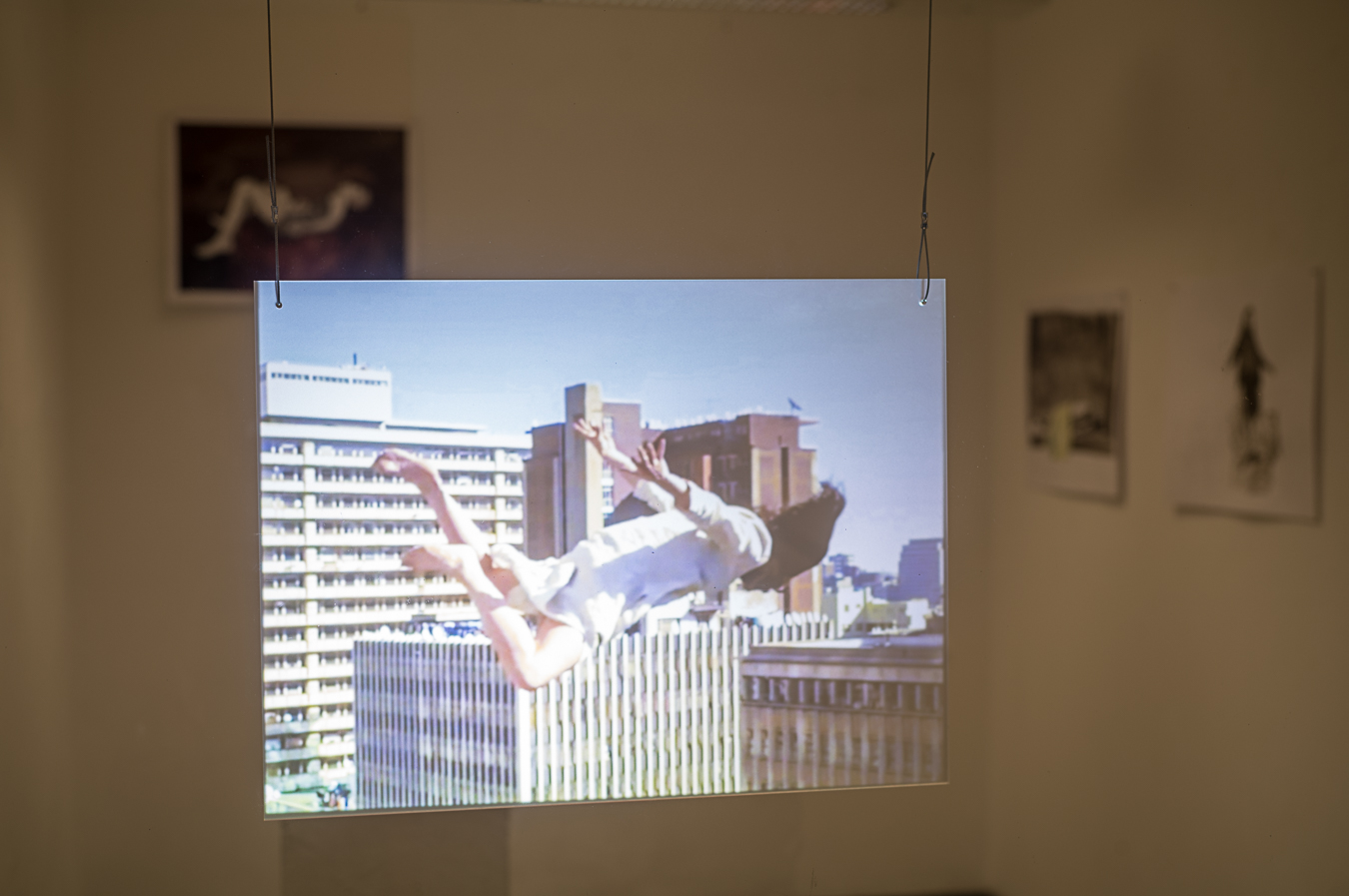
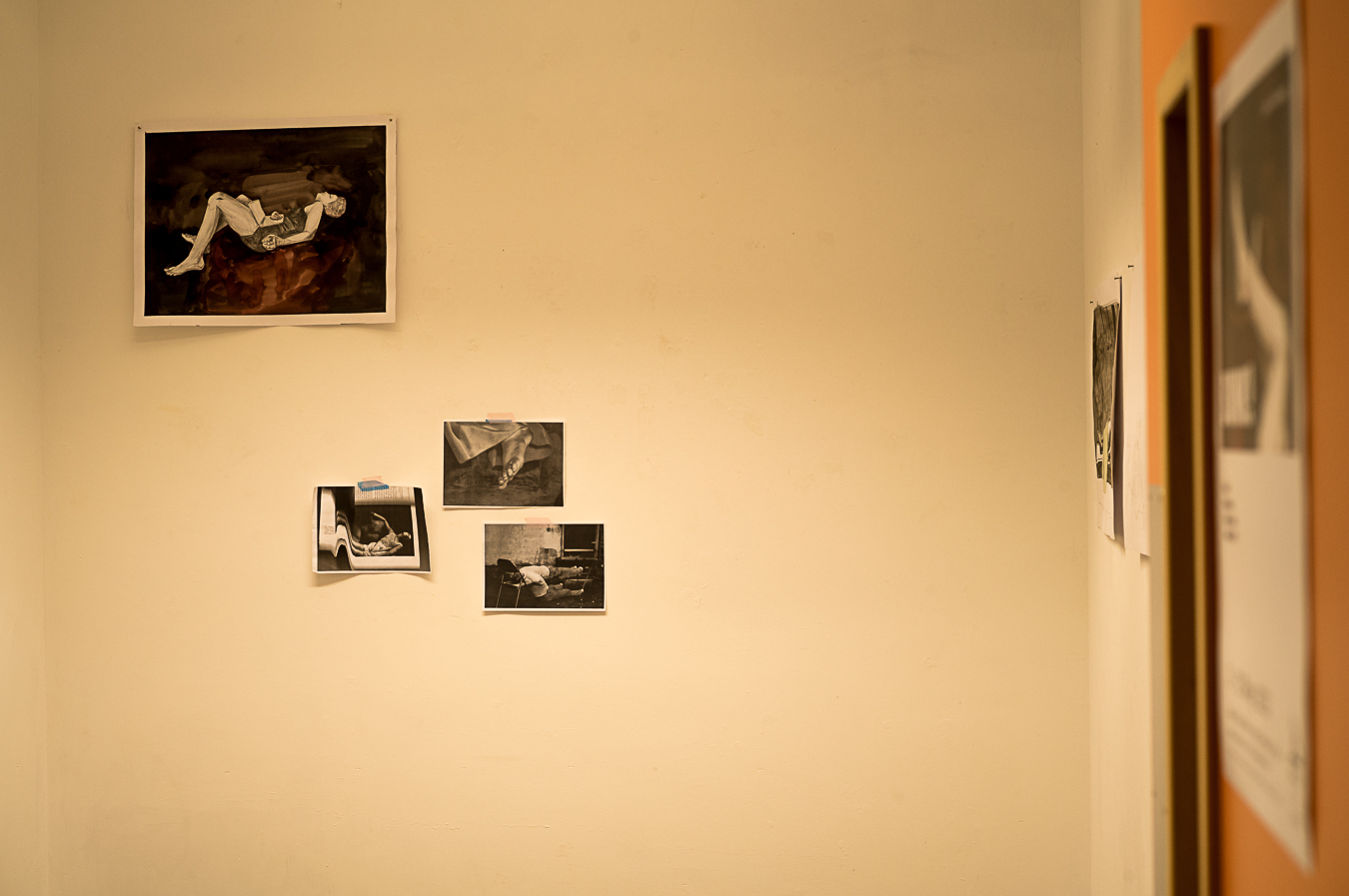
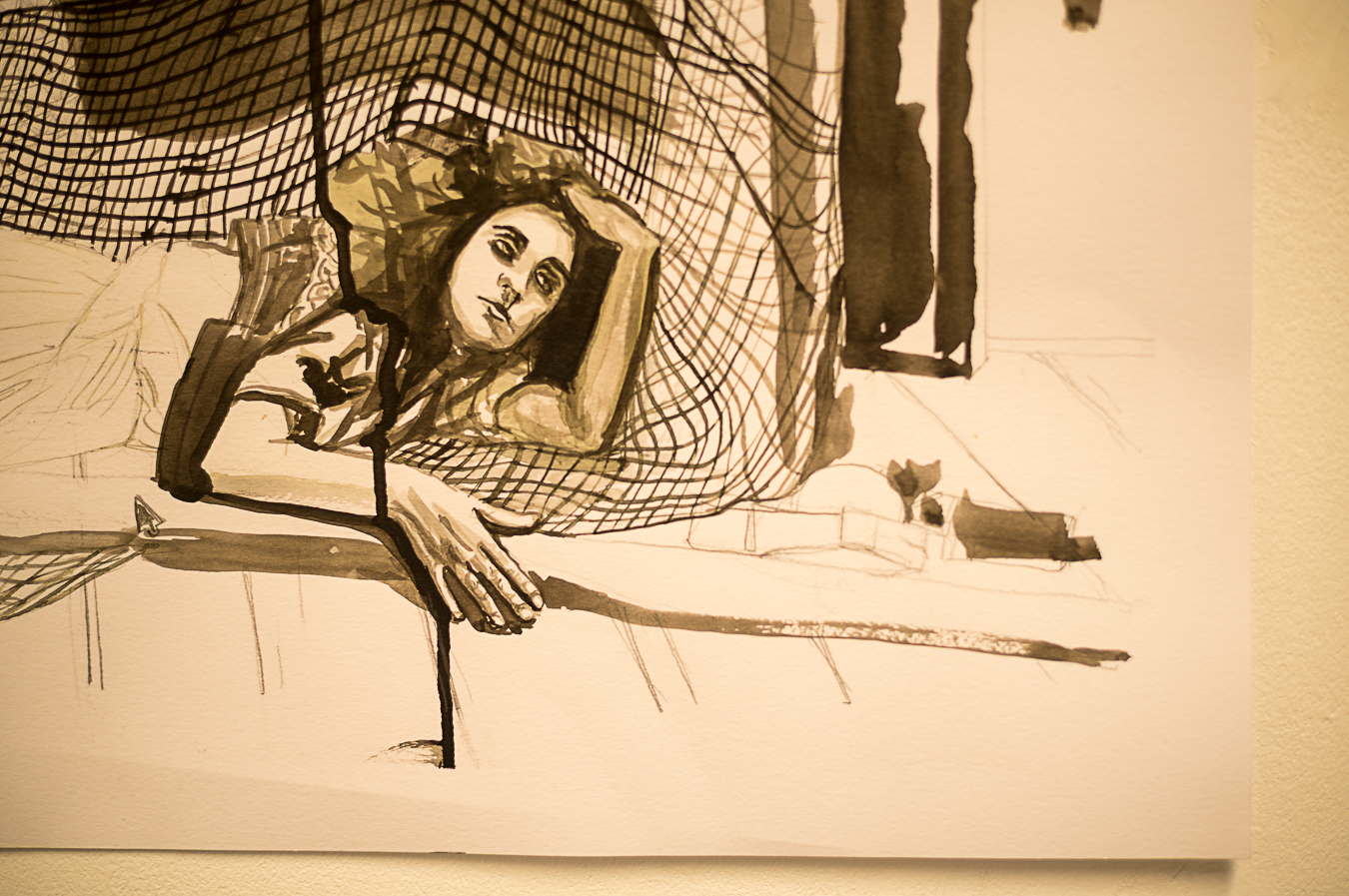
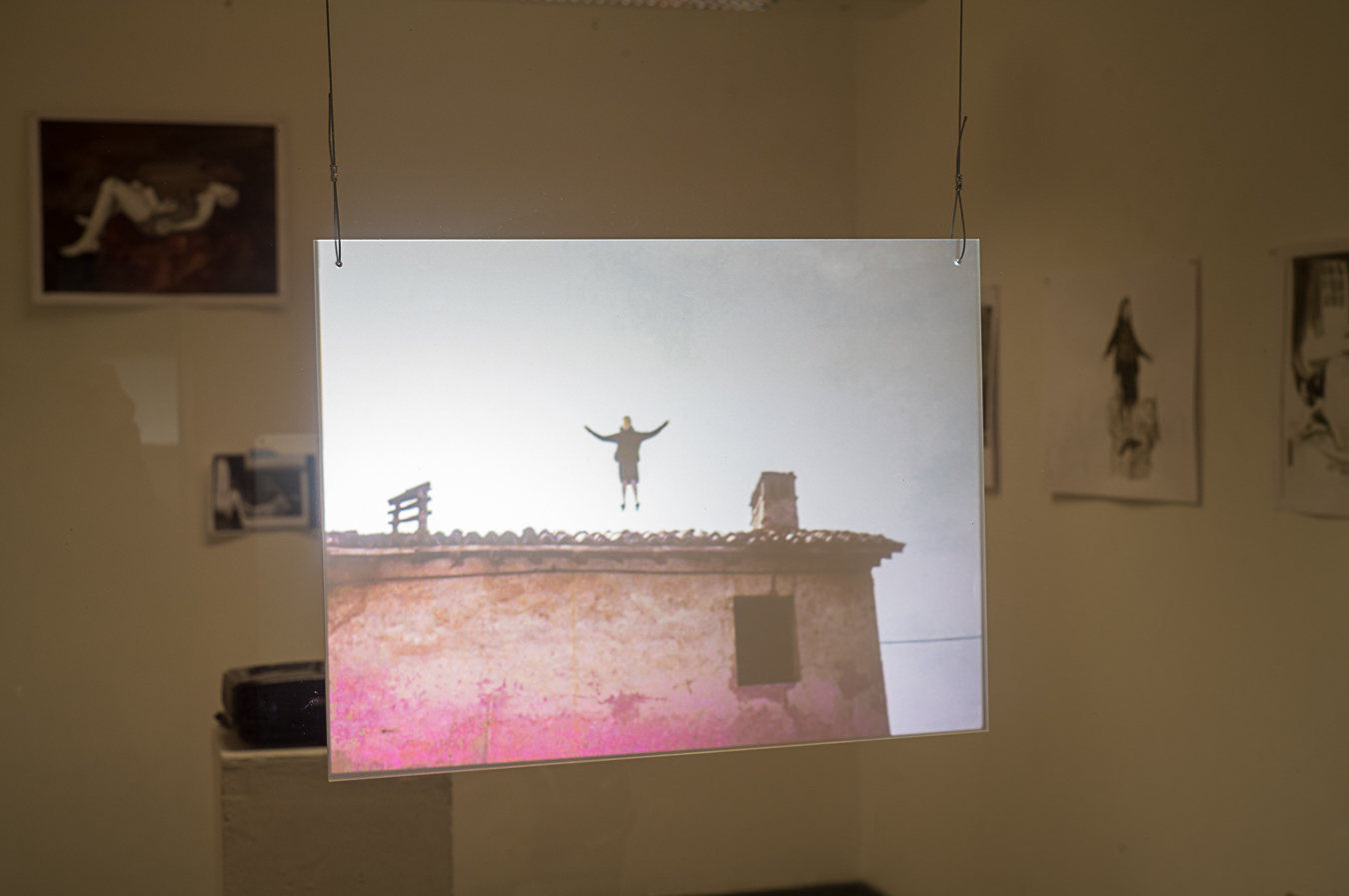

Photos: Courtesy of Dana Brass
Bedbugs & Other Intimacies
Exhibition and booklaunch at Hweg, Penzance 2022This exhibition bought together a series of watercolours, an artist book and a video installation that moved between Hastings and Penzance, navigating private and shared moments, jumping between personal observations and national news.
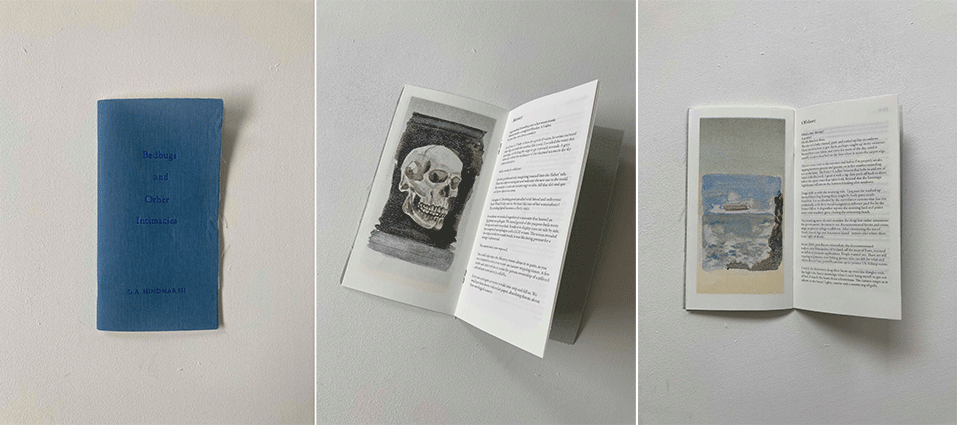
Bed Bugs & Other Intimacies, (28pp. Full colour Risograph printed; Clothbound, foil stamped, soft-cover) is a small edition artist book bringing together a collection of texts and drawing reproductions, printed in 4-colour Risograph process with a raw bookcloth cover. Set in a perpetual backwards looking present, the narrator restlessly searches for fragments from a remembered past, alongside any symbolic meaning obtained from everyday encounters, to unravel a sense of identity split across locations. Brushing up against literary, cinematic and autobiographical influences the writing unfolds alongside a series of re-rendered screenshots, gleaned from the handheld screen. Drawn from clickbait, advertising algorithms and news headlines these images capture that which drifts into our subconscious to become the fables of our time – a beached whale, an eel escaping from a heron's throat, a tanker floating above the horizon off the Cornish coast
Practicing Concern
Residency with UnderpinningExhibition and event APT Gallery, Artlicks Weekend 2019
Practicing Concern, curated by Laura Hindmarsh and Kirsty Russell as Underpinning, at APT Gallery, London. Group show with Jessica Barrie, Laura Hindmarsh, Gabriella Hirst, Claire Krouzecky, Amy Pickles, Kirsty Russell, Jenny Salmean and Phillipa Stafford.
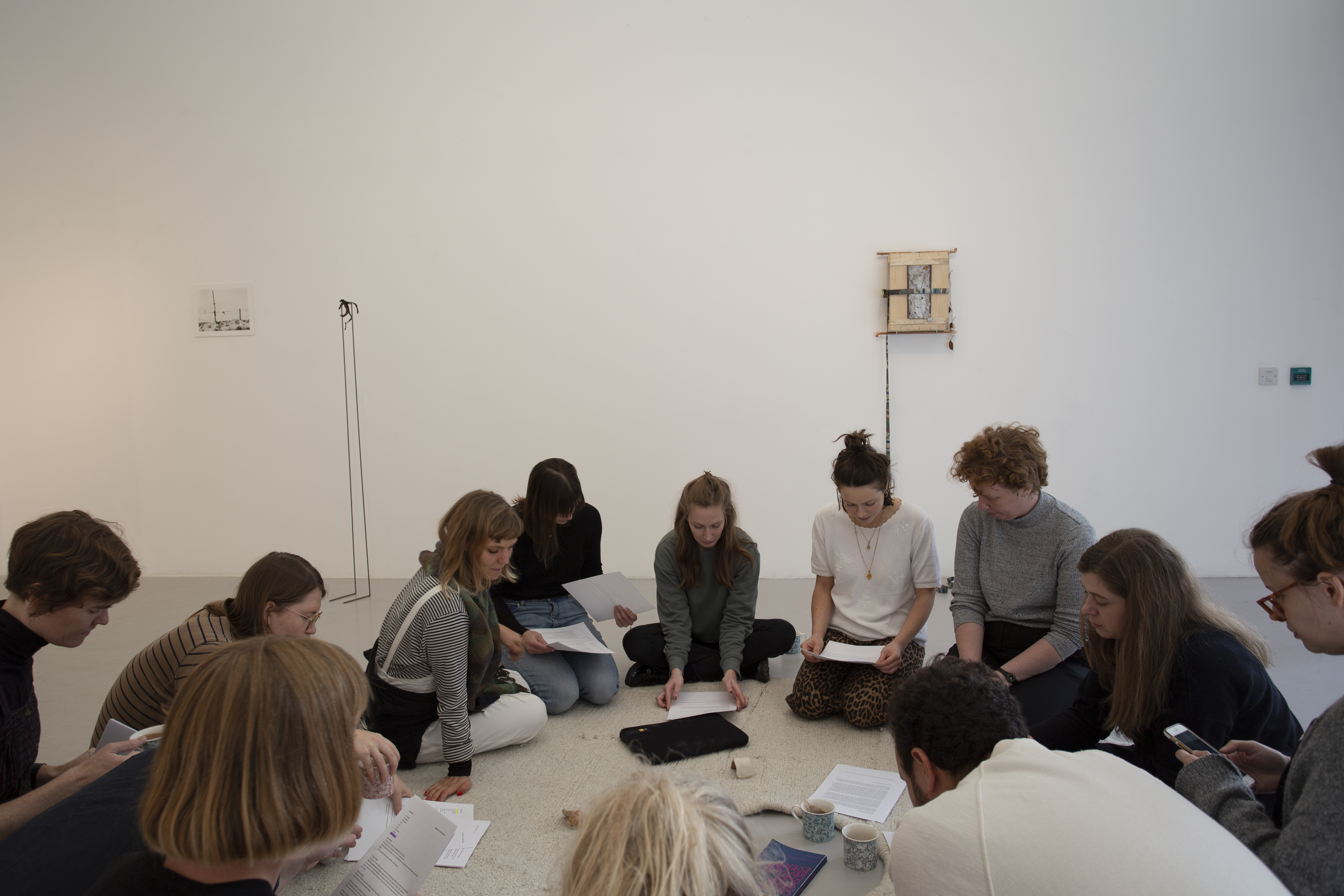
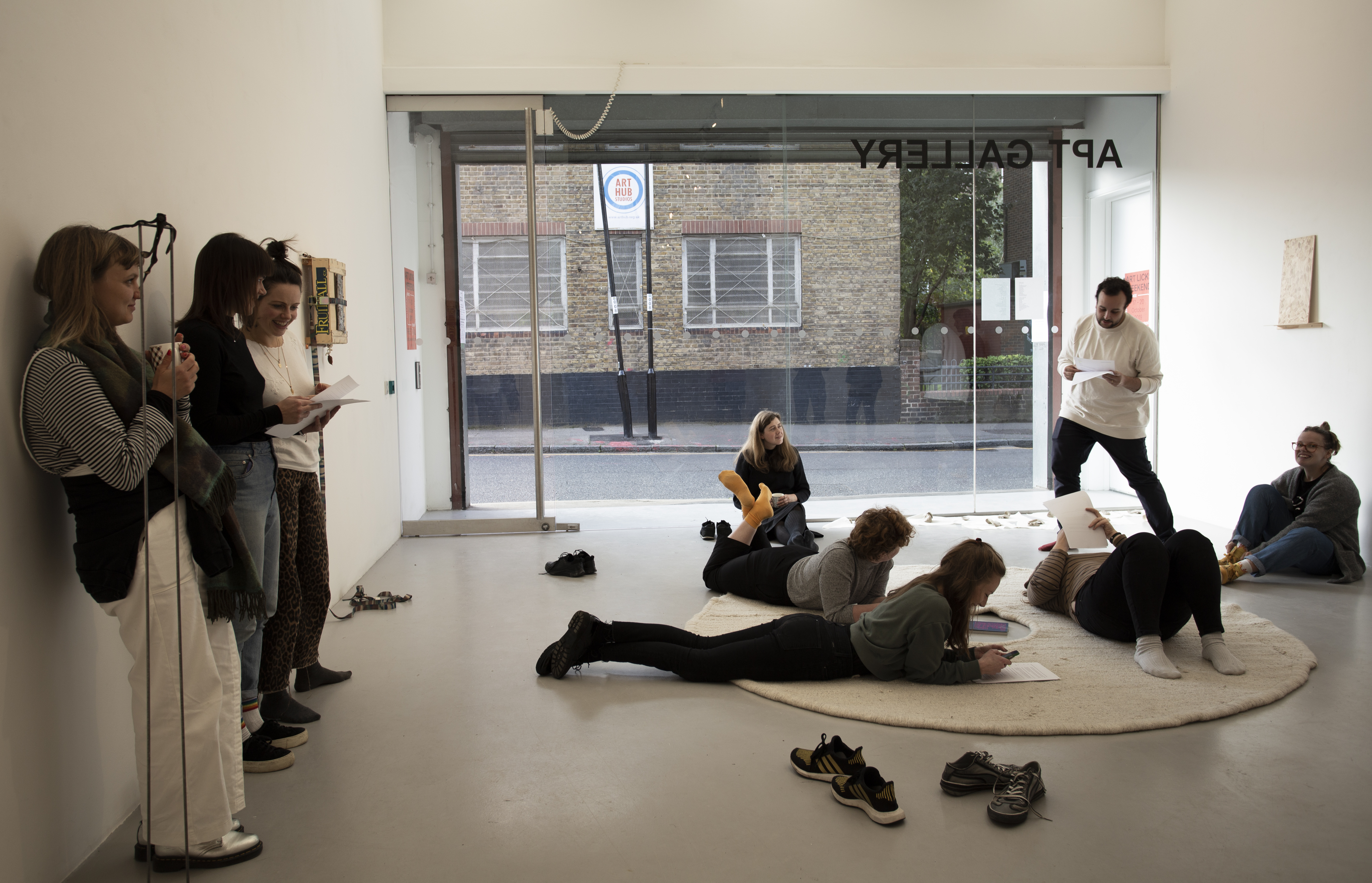
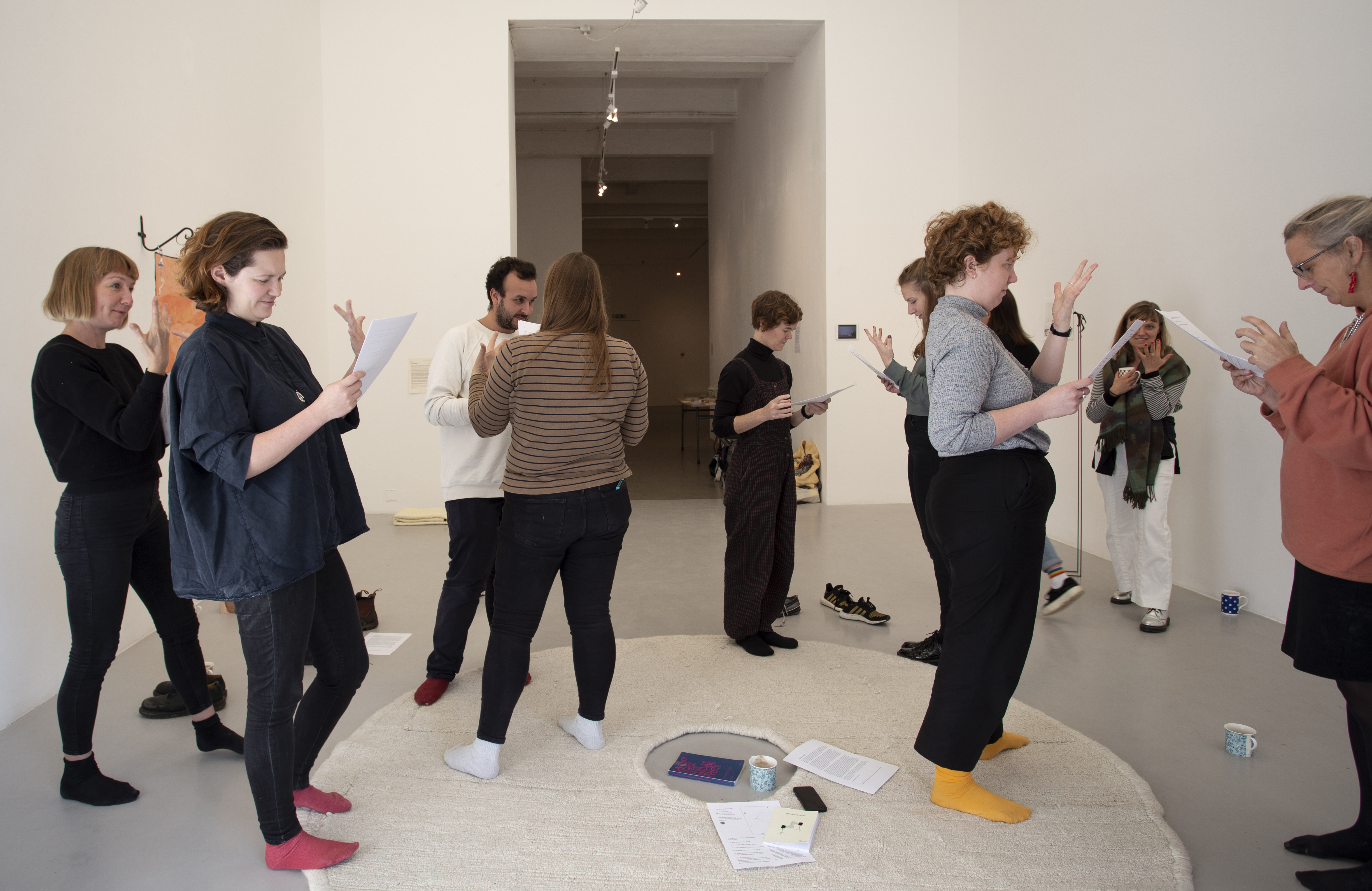
Underpinning invited others to reflect on what and who is underpinning, enabling, holding and restraining their practices. As Underpinning, Kirsty Russell and Laura Hindmarsh expanded on works within the exhibition to reflect on the ways that their own networks maintain and nurture practice, effectively working both collectively and remotely.
The exhibition gave attention to the often invisible gestures of help, care and validation shared between artists that extend beyond the professional veneer of an individual art practice. Considering peers who support and self organise for one another, who provide context and feedback, edit each others texts, document each others work, sleep on each others couches, hold each other’s hands and babies. This body of work reflects on the ways in which work and friendship overlap, as a way of working outside of funded art world structures.
Syllabus IV
Participant 2018-2019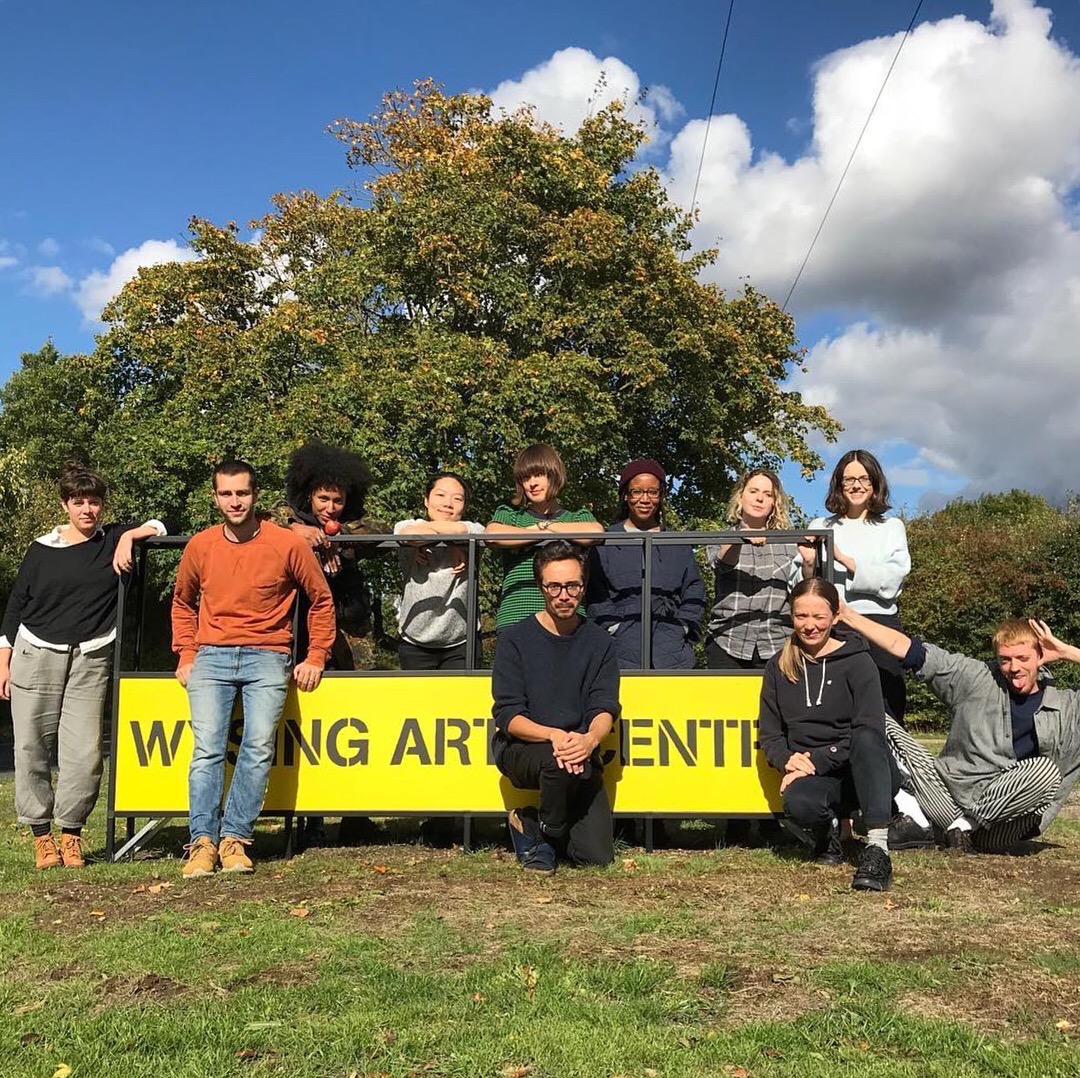

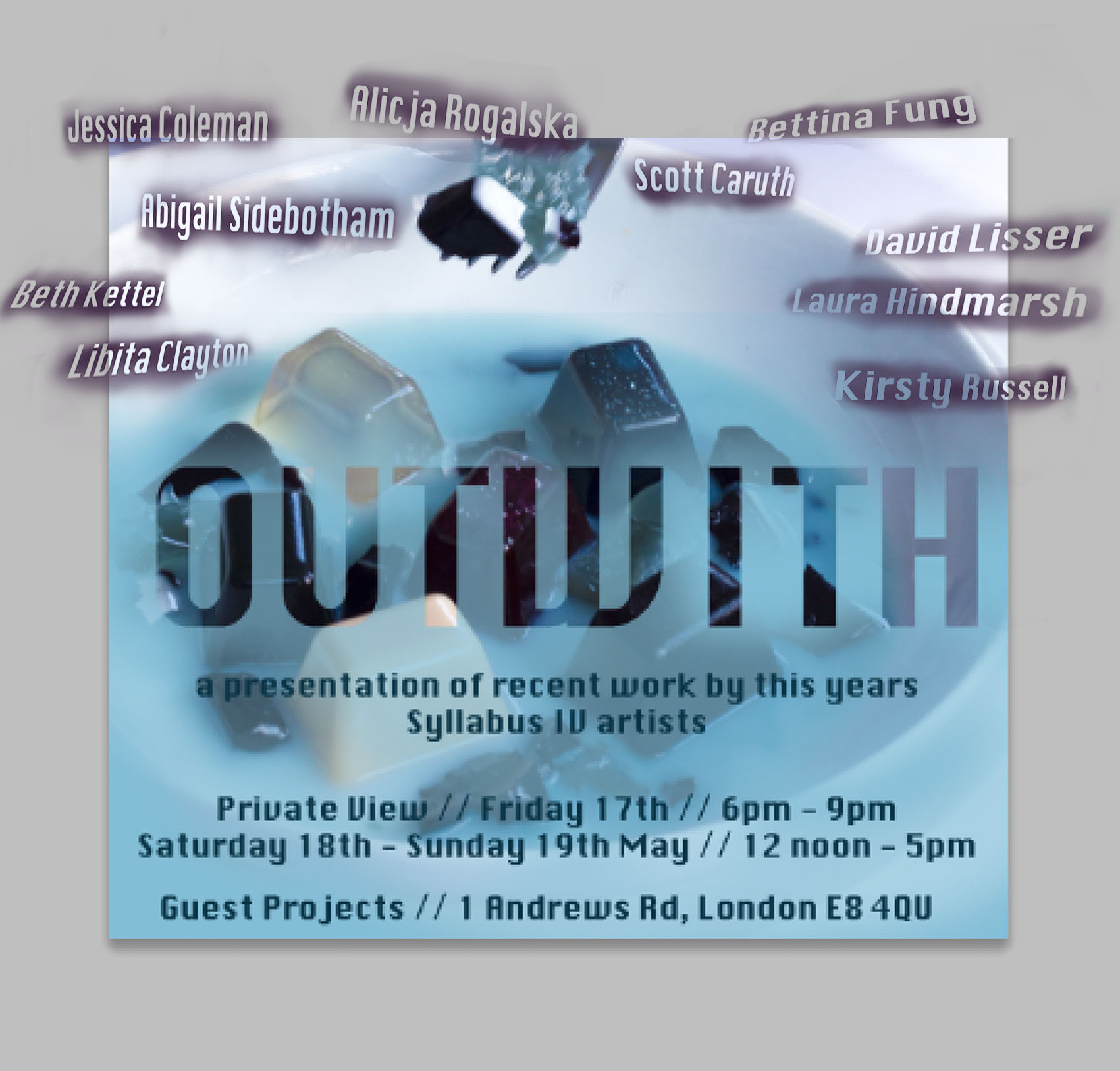
Ten artists have been selected for Syllabus IV, a national, collaboratively-produced alternative learning programme, jointly delivered by Wysing Arts Centre, Cambridge; Eastside Projects, Birmingham; Iniva (Institute of International Visual Arts), London; S1 Artspace, Sheffield; Spike Island, Bristol and Studio Voltaire, London.
The selected artists for Syllabus IV are: Scott Caruth, Libita Clayton, Jessica Coleman, Bettina Fung, Laura Hindmarsh, Beth Kettel, David Lisser, Alicja Rogalska, Kirsty Russell and Abigail Sidebotham.
Now in its fourth year, Syllabus IV provides a learning programme for artists over a ten-month period and is supported using public funding from Arts Council England.
Syllabus is developed collaboratively with the participating artists, the partner institutions and the artistic advisors Sonya Dyer and Helen Nisbet.
Woman with Man with Mirror
Collaboration with Teaching and Learning Cinema 2016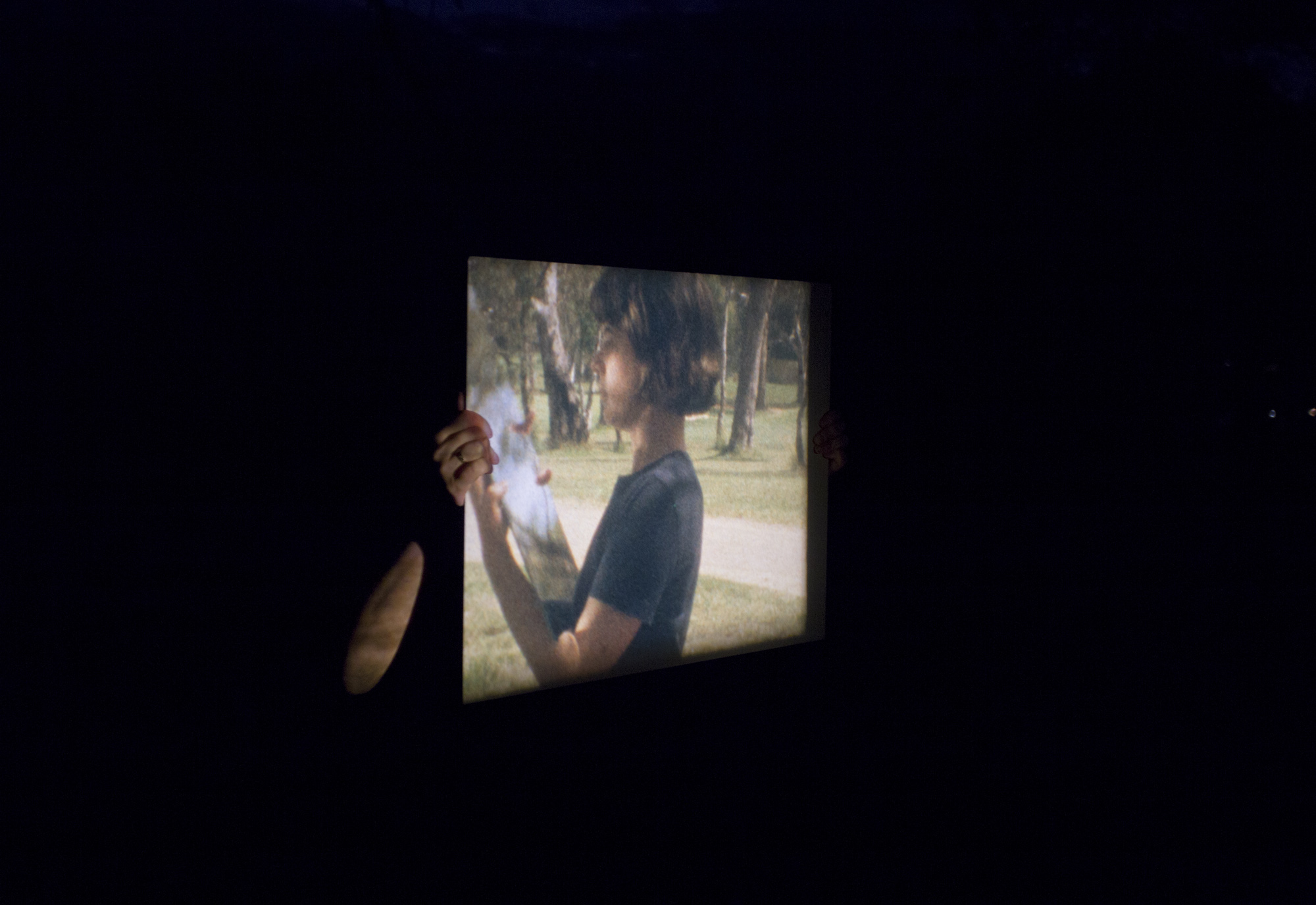
 In 2016 I worked with Lucas Ihlein and Louise Curham from Teaching and Learning Cinema to re-enact my own version of Guy Sherwin’s Man With Mirror.
In 2016 I worked with Lucas Ihlein and Louise Curham from Teaching and Learning Cinema to re-enact my own version of Guy Sherwin’s Man With Mirror.Teaching and Learning Cinema’s interest is in creating screening events and workshops which encourage discussion, and break down the passivity of looking at images and documentation of situationed and event based work.
Their main focus in recent years has been the re-enactment of key Expanded Cinema works from the 1960s and 1970s. More info here: http://teachingandlearningcinema.org/
Double Exposure
Residency and Exhibition at PhotoAccess 2016
Miranda Johnson on Finding Focus
Amongst a swirling mass of insecure locations, occupations, and identities, Laura Hindmarsh’s work searches for focus. As a British-Australian, she is both a foreigner and a citizen; as an artist, she must work in precarious, short-term employment conditions in order to survive. As a female artist, she negotiates the terrain of representing herself on both sides of the camera, as maker and subject, representor and represented. Finding Focus deals with the constant mediation between different identities that are both personal and political. Through this negotiation Hindmarsh’s own image and identity become inextricable from the entanglements of politics, environment, and landscape.
The film Finding Focus (2016) displays her struggle with the necessity of representing her own image whilst also being the creator of the work. Filmed on the dry bed of Lake George outside Canberra, the artist portrays this battle to be on both sides of the camera as a physically taxing demand, as she sprints away from the camera to arrive at the point of focus. While the high exposure renders her slowly invisible, the lakebed remains ever-present. Imagery of landscapes and the female body can easily succumb to clichéd representations, raising questions of how or whether one can represent the Australian landscape without reverting to much-maligned connections between woman and land. These connections can invite colonisation, control, and the imposition of ‘culture’ over ‘nature’, in which the feminised land is something to be ordered and owned. Hindmarsh’s flickering image against this backdrop allows for a consideration of these uneasy associations between woman and landscape, both historically represented as the antitheses of the cultural zone of masculinity.
Hindmarsh’s series of cyanotypes of Lake George embody our reliance on the resources of our environment, refusing an easy separation of these zones of culture and nature. Recent theoretical work (1). has focused particular attention upon the political and material agency of water as a way of thinking about the structure of our culture and the circulation of power. Water is a constant force in our lives; in Australia, it is often noticed for its absence as well as its presence. As climate change increasingly troubles our way of life, water’s importance – in our oceans, lakes, swimming pools, and taps – will continue to highlight our modes of living and thinking, both personally and politically. Water’s capacity to travel across land, politics, and domestic and public life can challenge our modes of knowing, revealing the ways in which ‘nature’ and ‘culture’ are always co-constituted (2).
Cyanotypes involve exposing coated paper to UV light and washing it with water, resulting in a vibrant blue hue. Through this method, Hindmarsh’s images implicate the waters of the lake both symbolically and through her process. The lake, situated immediately beside the Federal Highway between Sydney and Canberra, is a main artery for the flow of politicians, and reminds us of the toxic political discourse around our environment in recent years. The looming impact of climate change and arguments concerning renewable energy are ever-present here, as the lakebed remained dry for years and wind turbines famously described as ‘blights on the landscape’(3). Politics are never far from this environment, and the presence of the lakebed, the turbines, and the highway speak to the connections between politics, culture, and the landscape.
Lake George is alleged to drain into other lakes around the world, as well as to predict the outcome of federal elections (4) The myths of its mysterious properties echo within the argument that water does indeed travel through and across cultural and political divisions, whilst also resonating with the instability of Hindmarsh’s own location and employment conditions throughout the course of her Double Exposure residency and artistic career. Her relocations – from Perth to Tasmania to London – leave a trail of short-term employment opportunities that are the grim reality for artists in a precarious, trickle-down economy. These unstable locations resonate in her work environment, living conditions, and sense of place.
In some ways it is her artwork itself that provides a line of continuity. Her series of salt prints were developed, one every day, upon returning to London following the first half of her Double Exposure residency period in Canberra in early 2016. The developed print became a record of her day, a marker of constancy, but also a written record of her feelings of anxiety and instability surrounding the UK’s vote to leave the European Union. By combining the everyday tasks of her life with her emotional response of dejection and alienation to another suddenly uncertain future, the fleeting nature of location, environment, and sense of place that are our current reality are brought to the fore.
1. Astrida Neimanis, Cecilia Chen, Janine McLeod (eds). 2013. Thinking With Water. (Montreal: McGill-Queen’s University Press.
2 Ibid., 5. 3. Latika Burke, “Joe Hockey says wind turbines ‘utterly offensive’” ABC News, 2 May 2014. Accessed operate nearby at: http://www.abc.net.au/news/2014-05-02/joe-hockey-wind-turbines-utterly-offensive/5425804)
4. Elise Pianegonda, “Whatever Happened to Lake George?” ABC News, 28 April 2015. Accessed at: http://www.abc.net.au/news/2016-04-18/what-happened-to-lake-george/7329398
Miranda Johnson is a freelance arts writer and worker based in Perth, Western Australia.
